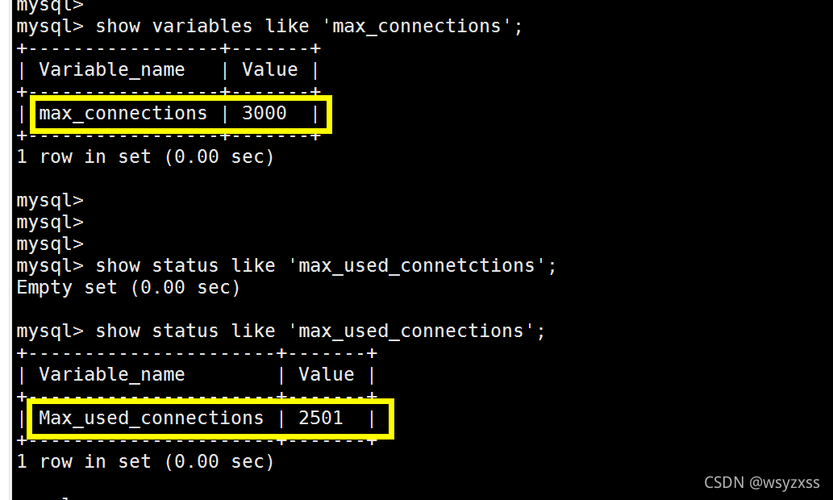
目录
使用 web API
API使用简单举例
查看所有的API
实例 JSON 详解
API使用举例
使用 web API
orchestrator提供精心设计的 Web API。
敏锐的 Web 开发人员会注意到(通过Firebug or Developer Tools)Web 界面如何完全依赖于 JSON API 请求。
开发人员可以使用 API 来实现自动化。
API使用简单举例
举例来说:
/api/instance/:host/:port:读取并返回实例的详细信息(示例/api/instance/mysql10/3306)/api/discover/:host/:port:发现给定实例(正在运行的orchestrator服务将从那里获取它并递归扫描整个拓扑)/api/relocate/:host/:port/:belowHost/:belowPort(尝试)将一个实例移动到另一个实例下方。orchestrator选择最佳行动方案。/api/relocate-replicas/:host/:port/:belowHost/:belowPort(尝试)将一个实例的副本移动到另一个实例下方。orchestrator选择最佳行动方案。/api/recover/:host/:post:假设有需要恢复的内容,在给定实例上启动恢复。/api/force-master-failover/:mycluster:强制在给定集群上立即进行故障转移。
查看所有的API
事实上的列表是代码,请参阅api.go(向下滚动到 RegisterRequests)。
您可能还会喜欢查看Orchestrator-client(源代码)以了解命令行如何转换为 API 调用。
或者,只需使用Orchestrator-client作为您的 API 客户端,这就是它的用途。
实例 JSON 详解
许多 API 调用返回 instance 对象,描述单个 MySQL 服务器。该示例后面是字段细分:
{
"Key": {
"Hostname": "mysql.02.instance.***",
"Port": 3306
},
"Uptime": 45,
"ServerID": 101,
"Version": "5.6.22-log",
"ReadOnly": false,
"Binlog_format": "ROW",
"LogBinEnabled": true,
"LogReplicationUpdatesEnabled": true,
"SelfBinlogCoordinates": {
"LogFile": "mysql-bin.015656",
"LogPos": 15082,
"Type": 0
},
"MasterKey": {
"Hostname": "mysql.01.instance.***",
"Port": 3306
},
"ReplicationSQLThreadRuning": true,
"ReplicationIOThreadRuning": true,
"HasReplicationFilters": false,
"SupportsOracleGTID": true,
"UsingOracleGTID": true,
"UsingMariaDBGTID": false,
"UsingPseudoGTID": false,
"ReadBinlogCoordinates": {
"LogFile": "mysql-bin.015993",
"LogPos": 20146,
"Type": 0
},
"ExecBinlogCoordinates": {
"LogFile": "mysql-bin.015993",
"LogPos": 20146,
"Type": 0
},
"RelaylogCoordinates": {
"LogFile": "mysql_sandbox21088-relay-bin.000051",
"LogPos": 16769,
"Type": 1
},
"LastSQLError": "",
"LastIOError": "",
"SecondsBehindMaster": {
"Int64": 0,
"Valid": true
},
"SQLDelay": 0,
"ExecutedGtidSet": "230ea8ea-81e3-11e4-972a-e25ec4bd140a:1-49",
"ReplicationLagSeconds": {
"Int64": 0,
"Valid": true
},
"Replicas": [ ],
"ClusterName": "mysql.01.instance.***:3306",
"DataCenter": "",
"PhysicalEnvironment": "",
"ReplicationDepth": 1,
"Is***aster": false,
"IsLastCheckValid": true,
"IsUpToDate": true,
"IsRecentlyChecked": true,
"SecondsSinceLastSeen": {
"Int64": 9,
"Valid": true
},
"CountMySQLSnapshots": 0,
"IsCandidate": false,
"UnresolvedHostname": ""
}实例的结构不断发展,而文档总是会落后。话虽如此,关键属性是:
Key:实例的唯一指示符:主机和端口的组合ServerID:MySQLserver_id参数Version:MySQL版本ReadOnly:全局read_only布尔值Binlog_format:MySQL 全局参数binlog_formatLogBinEnabled:是否启用二进制日志LogReplicationUpdatesEnabled:MySQL参数是否log_slave_updates启用SelfBinlogCoordinates:二进制日志文件和此实例写入的位置(如SHOW MASTER STATUS)MasterKey:主机名和端口(如果有)ReplicationSQLThreadRuning: 直接映射自SHOW SLAVE STATUS'sSlave_SQL_RunningReplicationIOThreadRuning: 直接映射自SHOW SLAVE STATUS'sSlave_IO_RunningHasReplicationFilters: true 如果有任何复制过滤器SupportsOracleGTID:如果配置为 truegtid_mode(Oracle MySQL >= 5.6)UsingOracleGTID:如果副本通过 Oracle GTID 复制,则为 trueUsingMariaDBGTID:如果副本通过 MariaDB GTID 复制,则为 trueUsingPseudoGTID:如果已知副本具有伪 GTID 坐标,则为 true(请参阅相关DetectPseudoGTIDQuery配置)ReadBinlogCoordinates:(复制时)从主机读取的坐标(轮询的内容IO_THREAD)ExecBinlogCoordinates:(复制时)现在正在执行的master坐标(SQL_THREAD执行了什么)RelaylogCoordinates:(复制时)当前正在执行的中继日志的坐标LastSQLError: 复制自SHOW SLAVE STATUSLastIOError: 复制自SHOW SLAVE STATUSSecondsBehindMaster: 直接从SHOW SLAVE STATUS' 映射Seconds_Behind_Master"Valid": false表示 aNULLSQLDelay: 配置的MASTER_DELAYExecutedGtidSet:如果使用Oracle GTID,执行的GTID集ReplicationLagSeconds:如果ReplicationLagQuery提供,计算出的副本滞后;否则与SecondsBehindMasterReplicas:MySQL 副本主机名和端口列表)ClusterName:与该实例关联的集群的名称;唯一标识簇DataCenter:(元数据)数据中心的名称,由DataCenterPattern配置变量推断PhysicalEnvironment:(元数据)环境名称,由PhysicalEnvironmentPattern配置变量推断ReplicationDepth:与master的距离(master是0,直接副本是1等等)Is***aster:当此实例是主-主对的一部分时为 trueIsLastCheckValid:最后一次尝试读取此瞬间是否成功IsUpToDate:该数据是否是最新的IsRecentlyChecked:最近是否对此实例进行了读取尝试SecondsSinceLastSeen:自上次成功访问此实例以来经过的时间CountMySQLSnapshots:已知快照数量(数据由 提供orchestrator-agent)IsCandidate:(元数据)true当该实例已通过CLI 命令标记为候选实例register-candidate时。可用于崩溃恢复以优先考虑故障转移选项UnresolvedHostname:此主机未解析的register-hostname-unresolve名称,如CLI 命令所示
API使用举例
- 获取有关集群的一般信息:
curl -s "http://my.orchestrator.service.***/api/cluster-info/my_cluster" | jq .
{
"ClusterName": "my-cluster-fqdn:3306",
"ClusterAlias": "my_cluster",
"ClusterDomain": "my-cluster.***",
"CountInstances": 10,
"HeuristicLag": 0,
"HasAutomatedMasterRecovery": true,
"HasAutomatedIntermediateMasterRecovery": true
}- 查找
my_cluster没有二进制日志记录的主机:
curl -s "http://my.orchestrator.service.***/api/cluster/alias/my_cluster" | jq '.[] | select(.LogBinEnabled==false) .Key.Hostname' -r
my_cluster找到的 master的直接副本:
curl -s "http://my.orchestrator.service.***/api/cluster/alias/my_cluster" | jq '.[] | select(.ReplicationDepth==1) .Key.Hostname' -r
或者:
master=$(curl -s "http://my.orchestrator.service.***/api/cluster-info/my_cluster" | jq '.ClusterName' | tr ':' '/')
curl -s "http://my.orchestrator.service.***/api/instance-replicas/${master}" | jq '.[] | .Key.Hostname' -r
- 查找所有中级大师
my_cluster:
curl -s "http://my.orchestrator.service.***/api/cluster/alias/my_cluster" | jq '.[] | select(.MasterKey.Hostname!="") | select(.Replicas!=[]) .Key.Hostname'
